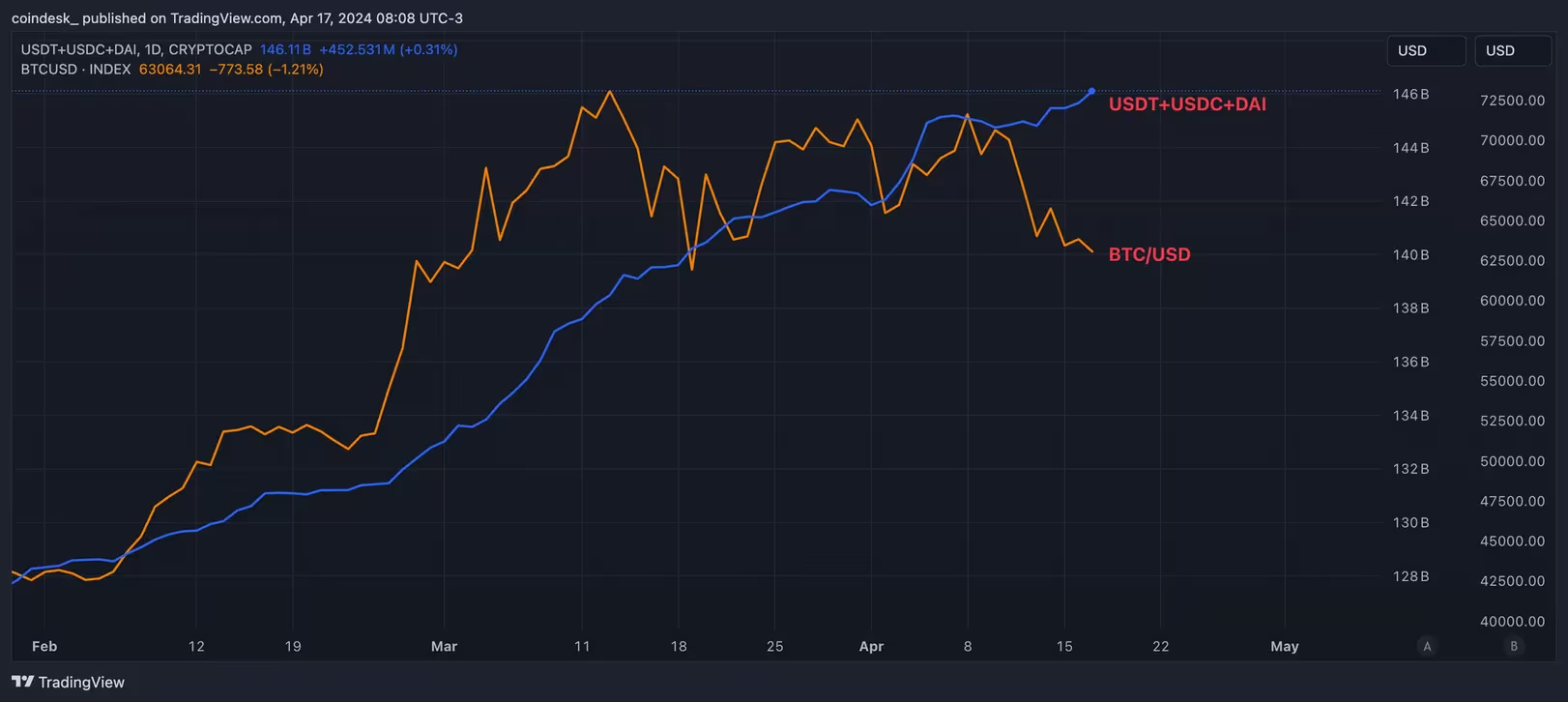Crypto News– Bitcoin’s fourth mining-reward halving approaches in just two days, poised to reduce BTC’s per block emission to 3.125 BTC and slash the pace of new supply by 50%. Past halvings heralded extensive multimonth BTC rallies, fueling confidence in a repeat performance within the crypto community.
Post-Halving BTC in First Mover Americas: Goldman Sachs Highlights the Macro-Economy
However, investment banking titan Goldman Sachs urges caution, advising clients against drawing direct parallels with previous halving cycles. In a note to clients dated April 12, Goldman’s Fixed Income, Currencies and Commodities (FICC) and Equities team highlighted the importance of considering the prevailing macroeconomic conditions, notably today’s landscape marked by high inflation and interest rates, which differs from past cycles.

According to broker Bernstein, the miner fear factor is peaking ahead of the halving, prompting investors to consider buying outperform-rated Riot Platforms (RIOT) and CleanSpark (CLSK). Bernstein suggests that the market will reward these companies for their superior execution and leadership in self-mining hashrate. Mining stocks have lagged behind bitcoin (BTC) year-to-date due to concerns about profitability post-halving, expected around April 19-20. Hashrate, representing the total computational power for mining and processing transactions on a proof-of-work blockchain, is a key factor. Analysts Gautam Chhugani and Mahika Sapra anticipate a historical pattern where bitcoin price surges follow the halving event, sometimes a few months later.
Meanwhile, U.S. Senators Cynthia Lummis (R-Wyo.) and Kirsten Gillibrand (D-N.Y.) have introduced a new stablecoin bill aiming to define the operation of stablecoins in the U.S. This legislation addresses the need for regulation in the stablecoin sector, specifically focusing on payment stablecoin issuers. Under the proposed bill, these issuers would face reserve and operational requirements, including the establishment of subsidiaries dedicated to stablecoin issuance. Additionally, stablecoin issuers would be mandated to transact in dollar-backed tokens, adding further regulatory oversight to the stablecoin ecosystem.
















Leave a comment